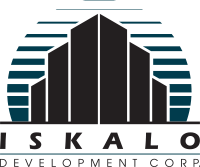The real estate development process is extremely involved, yet very rewarding! Here is a look at the commercial real estate development process step by step:
Complete pre-development research.
Research is the most important part of the commercial real estate development process. Establishing the risk of a development project is crucial for determining whether or not the project will offer a positive return on investment. It’s important that you complete a thorough market analysis to ensure that you’re settling in the best possible location for your target demographic. In most cases, markets with steady population growth and a diverse employment base are most advantageous for developers.
Find a property.
Once you’ve settled on a market and location, it’s time to find a property! Look at all available properties within the area that meet your specific site requirements and preferences. Be sure to consider and evaluate the property size, visibility, traffic flow, zoning restrictions, surrounding infrastructure, potential access points and nearby competitors. Can you add value to the property?
Evaluate legal requirements.
It’s important that the developer, as the prospective buyer, satisfies legal requirements before making a transaction. Look at property zoning restrictions, local government policies and community public input. It’s a good idea to reach out to a municipal planner for this information.
Determine feasibility.
Site Investigation Reports assess any potential issues with the site and what needs to be done to meet legal requirements. These requirements include land use and zoning, building permits, landscape setbacks, signage requirements, utilities and more. It’s the developer’s job to determine whether the finished site’s benefits will outweigh the initial costs invested. Be sure to compare the potential of the development to the land purchase and acquisition costs, permit and review costs, construction costs, insurances, closing costs, etc.
Acquire permits.
Be sure to acquire a land-use and building permit before you begin construction.
Create a construction plan.
After obtaining the proper permits and arranging construction financing, it’s time to create a construction design plan. The developer’s role is to manage and coordinate the construction phase, from start to finish. Determine the project requirements, establish quality expectations, develop a time schedule, and authorize roles and responsibilities.
Be sure to monitor the construction team’s progress very carefully. Ensure that regulations are being followed and that everything is up to code, while you ensure that the team is working on schedule and according to the set budget. If something goes wrong along the way, it could cost you down the road.
Determine your post-development plan.
Once construction is complete and the project meets all of the final inspections and codes, the municipal agency will issue the developer a Certificate of Occupancy for the property. Then, the developer can decide whether to open the building for tenants to lease or they can sell the finished property and use the collateral for another project.

